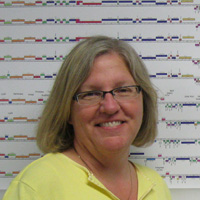Welcome to the forums at seaphages.org. Please feel free to ask any questions related to the SEA-PHAGES program. Any logged-in user may post new topics and reply to existing topics. If you'd like to see a new forum created, please contact us using our form or email us at info@seaphages.org.
Recent Activity
All posts created by debbie
| Link to this post | posted 28 Apr, 2022 17:42 | |
|---|---|
|
|
Maria, I think that this is something to investigate. Let's see what your students turn up this ummer and address it then. Will that work? debbie |
Posted in: Functional Annotation → Membrane protein
| Link to this post | posted 28 Apr, 2022 00:55 | |
|---|---|
|
|
Hi all, I just updated SEA-PHAGES phages shared with SEA-PHAGES schools. Thanks for making your phages available to others! April 27, 2022 |
Posted in: Shared SEA-PHAGES Phages → Shared SEA-PHAGES Phages
| Link to this post | posted 25 Apr, 2022 19:55 | |
|---|---|
|
|
function assignment being used is "major capsid and protease fusion protein". |
Posted in: Cluster AU Annotation Tips → capsid fusion
| Link to this post | posted 25 Apr, 2022 19:40 | |
|---|---|
|
|
Any time one transmembrane domain is found, it is questionable. So we recommend using a second program. that usually takes care of the discrepancy. Thanks for doing the quick experiment. |
Posted in: Functional Annotation → Deep TMHMM?
| Link to this post | posted 25 Apr, 2022 19:06 | |
|---|---|
|
|
Either and all work. debbie |
Posted in: Functional Annotation → Deep TMHMM?
| Link to this post | posted 22 Apr, 2022 12:34 | |
|---|---|
|
|
Amaya, As I look at this gene, I would NOT call it any of the above, but rather a Hypothetical Protein. If it was a hit to the transferase of the cluster B2's Rosebush DNA modification system, using DpdA-like tRNA-guanine transglycosylase would be appropriate. Sonali, a phage with the other queosine pathway genes (I think) suggests that transferase could be the DpdA-like tRNA-guanine transglycosylase. But I haven't looked closely yet. In the case of Aoka, when I HHPred that gene, I do not get a single significant hit. I worked through this with Christian and we agreed to not call it. Here is the caveat, you have a bunch of orphams in the area. Have you been able to assign a function to any of the surrounding genes? Depending on what you have found, I would like to look again. |
| Link to this post | posted 22 Apr, 2022 11:22 | |
|---|---|
|
|
Fred, Terrific. I think the note is there. https://seaphagesbioinformatics.helpdocsonline.com/article-40 The 're-look' was a good thing. I am glad we took the time and weighed the evidence. debbie |
Posted in: tRNAs → Is there any recent evidence of a tRNA overlapping a protein gene, even by a few bp?
| Link to this post | posted 21 Apr, 2022 17:55 | |
|---|---|
|
|
Fred, I would delete this gene. The coding potential is "greatest" in the open reading frame in question, is closer to 93100 - so there really is no coding potential in the space between where the tRNAs reside. If you BlastN the sequence in question, it is VERY well conserved across the C1s, but my money is on some kind of RNA thing and not a protein coding gene. This area was well reviewed by an RNA guy back in the day, and for now, without additional data, I think I would like to refrain from calling this a gene. And yes, others called it, but I would disagree. What do you think? debbie |
Posted in: tRNAs → Is there any recent evidence of a tRNA overlapping a protein gene, even by a few bp?
| Link to this post | posted 20 Apr, 2022 20:46 | |
|---|---|
|
|
But as the 2022 Davidson paper shows, T4's TAC were finally elucidated and they go in opposite directions. Check it out. https://pubmed.ncbi.nlm.nih.gov/34826709/ |
Posted in: Cluster DH Annotation Tips → Tail assembly chaperones?
| Link to this post | posted 19 Apr, 2022 21:22 | |
|---|---|
|
|
Mitch, I agree. I would call the tail assembly chaperones in Morkie (that is the phage you are annotating, right?) The tail assembly chaperones are in the 'right place' and the slippage is cannonical. However, not all slippages in the DNs are cannonical and I would shy away from calling them. Cool! PS I consulted Dr. Hatfull about this and he agreed that the slippage is the compelling piece of data. debbie |
Posted in: Cluster DH Annotation Tips → Tail assembly chaperones?


 84Kb
84Kb